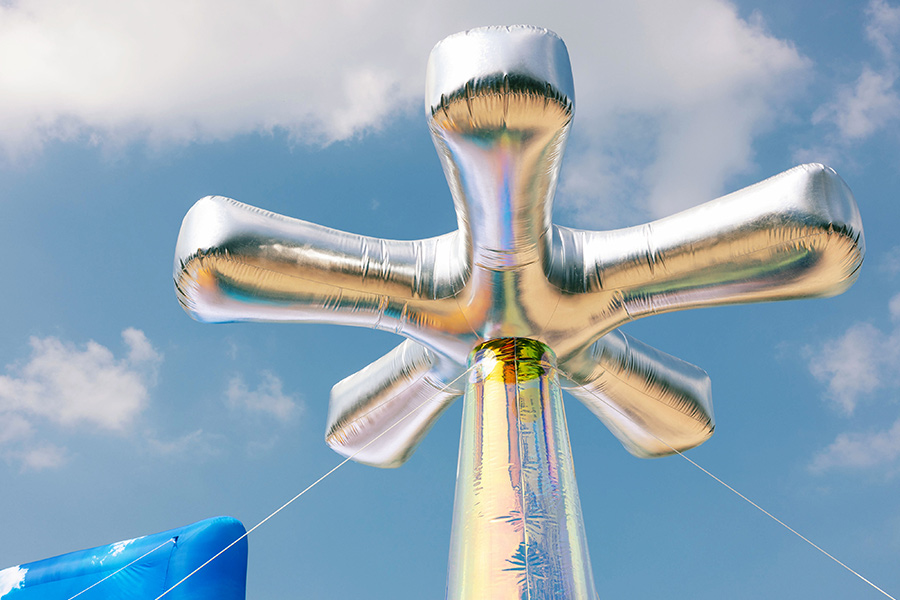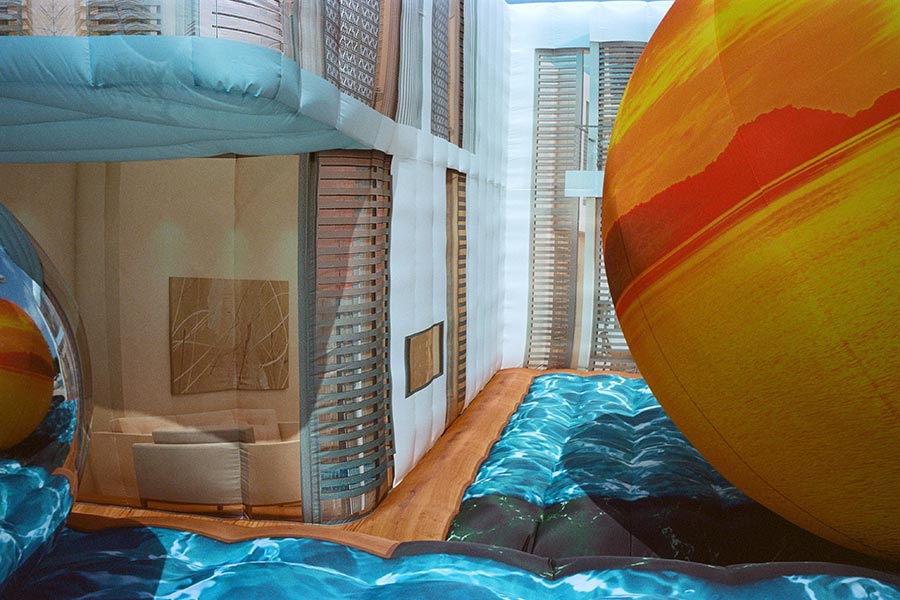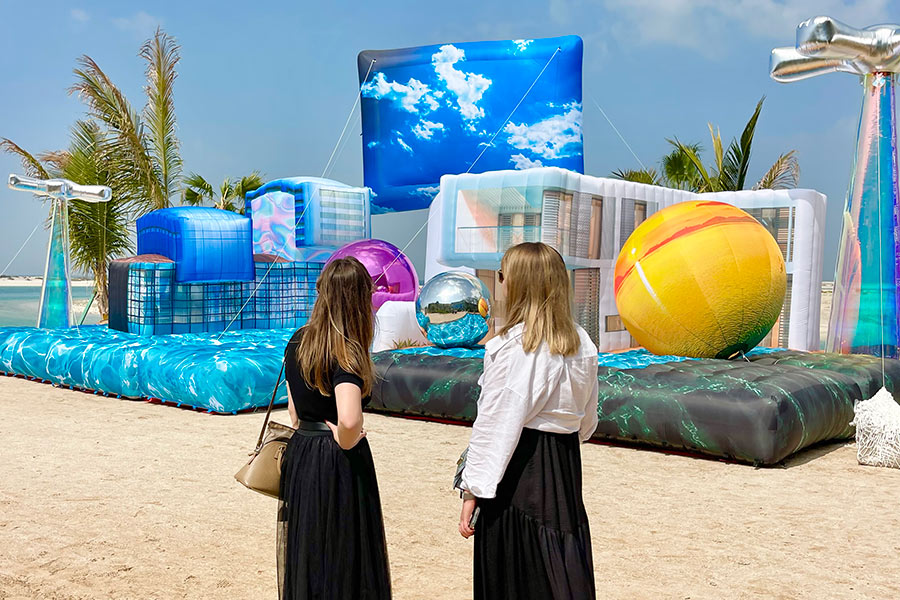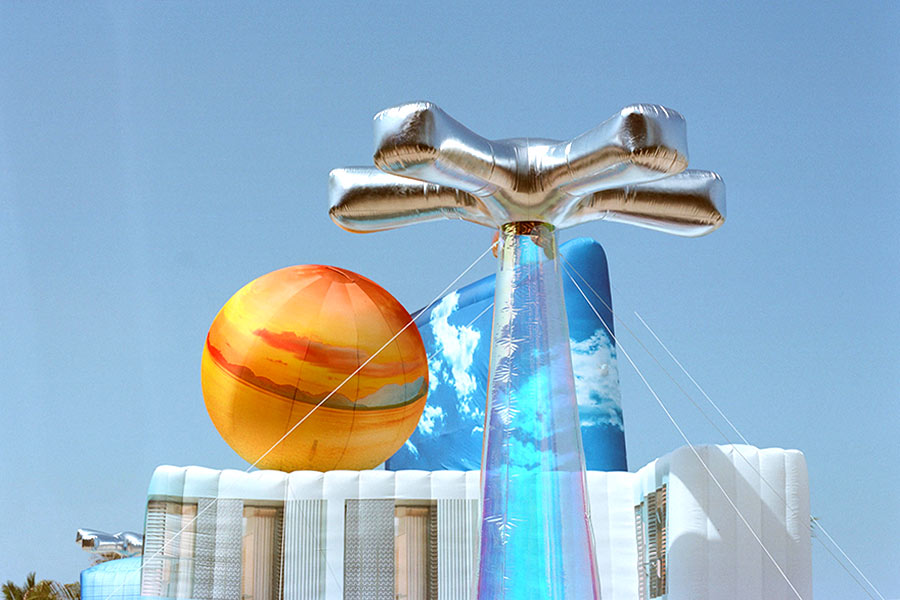The Idealised City
YEAR
2023-2024
PRODUCED
InLoco Gallery
LOCATIONS
The World Islands, Dubai, UAE
NOMAD, Capri, IT
Identity and landscape
The Idealised City is an interdisciplinary research project that explores the ubiquitous identities and landscapes emerging in the post-globalist era through both study and artistic interpretation. The exhibition’s title references the concept of the Ideal City as formulated by Leon Battista Alberti (1404–1472), who envisioned urban planning as a structured system where architecture was carefully delineated for each social segment.
Within this theoretical framework, identity is deeply rooted in the relationship between people and their surroundings. However, in the contemporary world—where mobility is constant and globalized structures define human experience—architecture and historical remnants no longer serve as primary anchors of identity. Instead, perception is shaped by an ever-expanding digital landscape, dictated by software, data flows, and ubiquitous imagery. Borders, once demarcations within the physical environment, are now increasingly drawn between natural and digital realms.
In an era where a significant portion of perceptual experience is mediated through digital environments and algorithm-driven aesthetics, urban planning is guided by software, while data harvesting determines human trajectories. How, then, can we reconcile impermanence with the preservation of intangible traditions? Can this awareness foster a deeper understanding of self and promote more egalitarian relationships within an increasingly homogenized world?
Today, the majority of the global population resides in newly developed urban areas—even in countries where historical artifacts have traditionally played a crucial role in shaping identity. The distinctions between suburban developments in China and the United States, emerging residential zones in Russia and the Gulf states, or commercial avenues in Europe and Latin America have become increasingly minimal. Leisure complexes, from the Mediterranean to Southeast Asia, mirror one another, further reinforcing this aesthetic standardization. Conversely, ancient city centers and heritage sites have been transformed into open-air museums, catering primarily to a cosmopolitan audience. The displacement of local populations from these historic spaces raises pressing questions about the nature of authenticity and the mechanics of collective identity in the contemporary era.





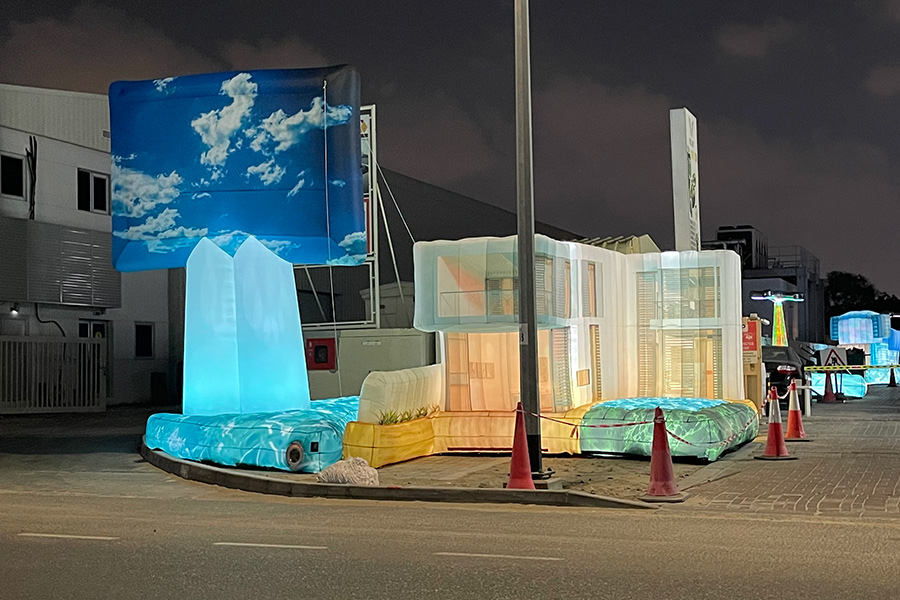
This project also draws from the legacy of nomadic traditions, particularly Bedouin culture, which historically prioritized movement, adaptability, and impermanence over fixed architectural permanence. Such perspectives echo the ideas of Abu Nasr Muhammad al-Farabi (870–950) in The Virtuous City (al-Madinat al-Fadilah), where urban planning was conceived not as a static construct tied to historical precedent, but as a fluid system capable of evolving with time.
Visually, The Idealised City reflects these themes through the use of universal renderings and stock images—symbols of perpetual transformation that seamlessly integrate into both natural and digital landscapes. At its core, the exhibition examines the convergence of identity across globalized spaces, interrogating the notion of authenticity, the blurred boundaries between reality and fiction, and the evolving role of photography and imagery in the digital age.
The exhibition takes the form of a large-scale outdoor installation, complemented by photographs, videos, paintings, and sculptural elements, offering an immersive experience. Expanding beyond the physical gallery space, it extends into the digital realm through interactive engagements within the Metaverse, reinforcing the fluidity and transience of contemporary identity.

